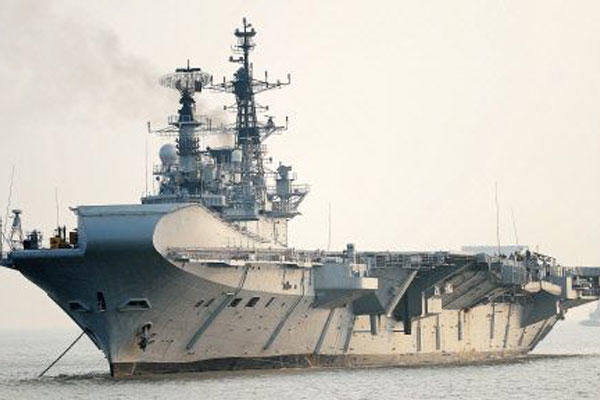Defense Secretary Ashton Carter signed a cooperation agreement with his Indian counterpart Wednesday to include helping India develop an aircraft carrier fleet viewed as a threat by China.
The U.S. Defense Department said in a statement that Carter and Indian Defense Minister Manohar Parrikar "agreed to expedite discussions to take forward cooperation on jet engines, aircraft carrier design and construction, and other areas"
As part of the agreement, the Navy's top carrier design official, U.S. Navy Rear Adm. Tom Moore, will meet in India later this month on plans by the New Delhi government to build a fleet of five carriers.
"Our two countries are working through a number of close relationships, and one of the things the Indians are interested in is learning more about aircraft carriers," Moore, the Navy's Program Executive Officer for Carriers, told U.S. Naval Institute News.
"So I'm actually heading up a Navy contingent to work with the Indian navy on aircraft carrier technology to the point that we could help them with their desire to build an indigenous aircraft carrier over in the Indian navy," Moore said.
In January, on his visit to India, President Obama and Indian Prime Minister Narendra Modi set the guidelines on forming "a working group to explore aircraft carrier technology sharing and design."
Carrier construction has been stressed by the Modi government to replace India's two aging and outmoded carriers.
The INS Viraat, the former British Royal Navy carrier Hermes, is due to retire next year, leaving India with one carrier -- the INS Vikramaditya, which is the former Adm. Gorshkov of the Soviet fleet.
India's first domestically-built carrier, the 40,000-ton, 860-foot INS Vikrant was due to be launched on May 28 but the event has been indefinitely postponed, according to local press reports. The slope-decked Vikrant was built to accommodate Russian-built MiG-29K jets.
Moore's visit was expected to focus on discussions for the design of India's planned 65,000-ton carrier Vishal, which might have a catapult launching system and nuclear power.
Moore told USNI News that the Indians were "really in the process of figuring out 'how big do I want it to be, how many planes do I want it to carry,' along those lines. So once we've had those conversations with them, we'll certainly be happy to engage with them where it makes sense for us."
India's plans for carriers have caught the attention of China, a traditional rival of India in the region. China's first and only aircraft carrier, the rebuilt and problem-plagued Liaoning, was originally the Russian navy's Varyag. China reportedly has its own long-range plans to build three nuclear carriers.
In January, when the U.S. initially agreed to help India with carrier construction, China's Communist party newspaper Global Times noted that "the earlier China establishes its own aircraft carrier capabilities, the earlier it will gain the strategic initiative. Even India has moved ahead of us."
-- Richard Sisk can be reached at Richard.Sisk@military.com.




























